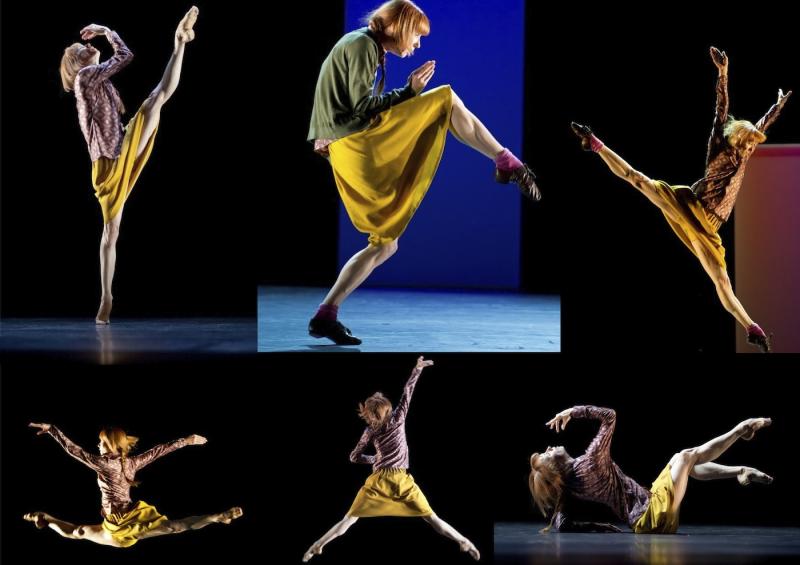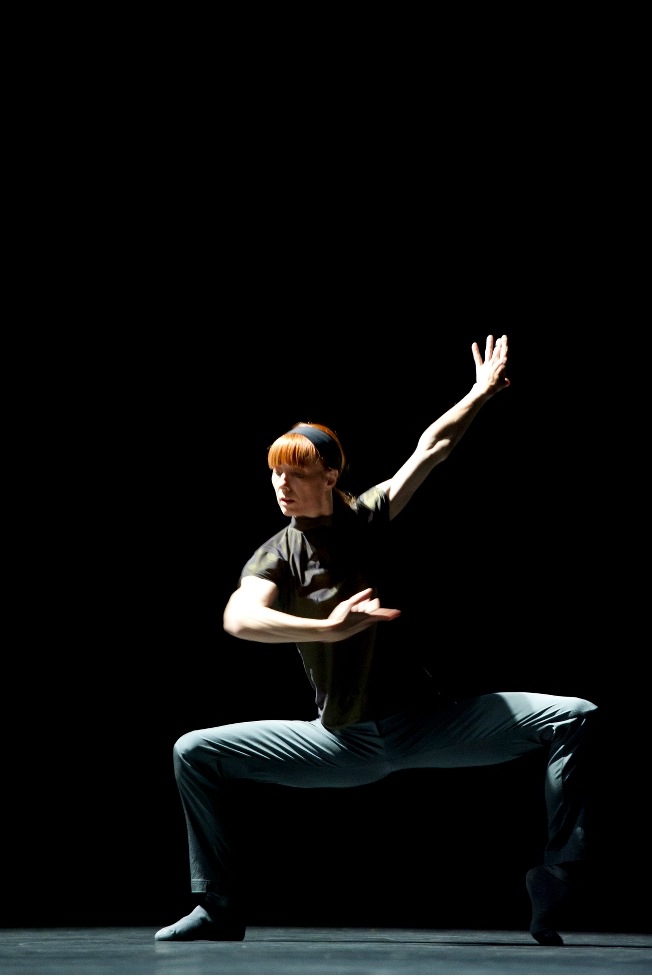Sylvie Guillem, 6000 Miles Away, Sadler's Wells Theatre | reviews, news & interviews
Sylvie Guillem, 6000 Miles Away, Sadler's Wells Theatre
Sylvie Guillem, 6000 Miles Away, Sadler's Wells Theatre
Guillem weaves her game-changing magic in Forsythe and Ek

People go to see Sylvie Guillem the way they used to go to Isadora Duncan or Anna Pavlova, to see a living legend, a game-changer. Guillem became one of dance’s handful of game-changers not when she was the controversially over-fashioned classical ballerina, nor even when she was the arrestingly individual dramatic ballerina in great British narrative ballets.
Many classical ballerinas have crossed into contemporary work but none with such eager comprehension and blistering charisma as our Sylvie. Barriers dissolve as she turns up. Notched on Guillem’s gardening spade would be the names of William Forsythe, Mats Ek, Russell Maliphant, Akram Khan, Jonathan Burrows, Maurice Béjart, Mary Wigman, Agnes de Mille and Rudolf Nureyev as well as classical and neo-classical choreographers. The range in style is enormous.
 This programme premiered two years ago, soon after the Japanese tsunami disaster that it is named for, and Guillem is even more astonishing (at 48) than before, not a trace less whip-fit and elegant than she appears in the video below, more than half her lifetime ago.
This programme premiered two years ago, soon after the Japanese tsunami disaster that it is named for, and Guillem is even more astonishing (at 48) than before, not a trace less whip-fit and elegant than she appears in the video below, more than half her lifetime ago.
Three works, three major names: Jiri Kylian, Forsythe, Ek. She dances the second and third, though why she has clung to this particular Kylian on the programme I don't understand, its vapidity quite foreign to the effect of the rest.
English National Ballet just performed a marginally better work of his, Petite Mort. More about pose than choreography, 27' 52" is seen in extract, a strung-out duet for half-clad man and woman (and carpet), in which there appears to be a theme of running phrases forward and backward. You hear this in the voice-overs (French and German) - I wondered if reverse mechanics explained the awkwardness of some of the choreography.
The girl, Aurélie Cayla, takes her red vest off and bares her breasts, and from then your reading of the vehement duetting is likely to alter as skin meets skin.
That titbit over, we’re onto the real matter: two terrific Guillem tributes by two choreographers who totally get her soaring measure. Broadly, Forsythe’s is brain, Ek’s is heart, but both are seated in soul and imagination, and each in its own way feels like a specific portrait of this specific dancer.
Forsythe’s Rearray seemed to me in 2011 the most thrilling piece of new choreography I saw that year, and I’m still transfixed by its faithfulness to classical ballet, its amusing postmodernism, and the cracking technical workout it gives to Guillem and her partner. Originally that was Nicolas Le Riche, and I miss his granite masculine assurance and the pair's complicit Paris Opéra understanding, but La Scala’s Massimo Murru brings his own, more friendly style, not least an impressively full and long ponytail.
Her feet spring inside their socks into that familiar, extreme arch, so feline in their microscopic control of balance, turn, jet-propulsionLittle bites of dance take place, cut off by black-outs, which snatch up fragments of barre exercise - ports de bras, développés, attitudes - and expand them into haikus of dense, delicious ballet dancing. Sometimes Guillem and Murru are together, sometimes alone, and the wavering half-light deceives your eyes, while David Morrow’s Berg-like music brushes the ears like twigs against a window in the night. They dance in grey jeans and socks, inside which her feet spring into that familiar, extreme arch, so feline in their microscopic control of balance, turn, jet-propulsion.
For sure, other dancers raised in the Guillem era could execute this in liquidity and elasticity, but none with such redoubtable, magical rigour, with such instinctive grip of the satisfying geometry of 90 degree arabesque, upright stance, and - thereby - with such a dramatically charged 180-degree vertical line. It’s the austere intellect dancing, it’s Merce Cunningham on speed, but this pared-down Guillem also radiates a witchy hint of mischief, flickering her leg up to the sky alluringly and snatching it back down again.
Ek, by contrast, winkled out something unexpectedly domestic in the ballerina when he created Bye for her. Even wearing hideous purple and mustard granny clothing and a badly cut hair-do, Guillem exercises her spell. A video door opens memories for her, of family, a man, a dog, while Ivo Pogorelich on CD plays a surprisingly restrained finale from the Beethoven Op 111 piano sonata.
Bye is flat-out sentimental, but she adds lemon to it by her quirky attitude. She’s dolefully funny, doing handstands, leaping in anger, sagging in rueful resignation, reliving excruciating moments. The bare legs are harshly lit, the close-up on her face is intended to show us her age. She is heartbreakingly good. How lucky to have been around to see Guillem these past 20 years, how much more alive dance has become, due to her argumentative, revelatory work ethic and personality.
- Sylvie Guillem performs 6,000 Miles Away at Sadler’s Wells Theatre, London, till Saturday. Then in Russia: Perm 27 May-1 June and Moscow 19-23 June.
- Sylvie Guillem's website
Guillem dancing William Forsythe's in the middle, somewhat elevated at Paris Opera Ballet with Laurent Hilaire
rating
Explore topics
Share this article
Add comment
The future of Arts Journalism
You can stop theartsdesk.com closing!
We urgently need financing to survive. Our fundraising drive has thus far raised £49,000 but we need to reach £100,000 or we will be forced to close. Please contribute here: https://gofund.me/c3f6033d
And if you can forward this information to anyone who might assist, we’d be grateful.

Subscribe to theartsdesk.com
Thank you for continuing to read our work on theartsdesk.com. For unlimited access to every article in its entirety, including our archive of more than 15,000 pieces, we're asking for £5 per month or £40 per year. We feel it's a very good deal, and hope you do too.
To take a subscription now simply click here.
And if you're looking for that extra gift for a friend or family member, why not treat them to a theartsdesk.com gift subscription?
more Dance
 'We are bowled over!' Thank you for your messages of love and support
Much-appreciated words of commendation from readers and the cultural community
'We are bowled over!' Thank you for your messages of love and support
Much-appreciated words of commendation from readers and the cultural community
 Peaky Blinders: The Redemption of Thomas Shelby, Rambert, Sadler's Wells review - exciting dancing, if you can see it
Six TV series reduced to 100 minutes' dance time doesn't quite compute
Peaky Blinders: The Redemption of Thomas Shelby, Rambert, Sadler's Wells review - exciting dancing, if you can see it
Six TV series reduced to 100 minutes' dance time doesn't quite compute
 Giselle, National Ballet of Japan review - return of a classic, refreshed and impeccably danced
First visit by Miyako Yoshida's company leaves you wanting more
Giselle, National Ballet of Japan review - return of a classic, refreshed and impeccably danced
First visit by Miyako Yoshida's company leaves you wanting more
 Quadrophenia, Sadler's Wells review - missed opportunity to give new stage life to a Who classic
The brilliant cast need a tighter score and a stronger narrative
Quadrophenia, Sadler's Wells review - missed opportunity to give new stage life to a Who classic
The brilliant cast need a tighter score and a stronger narrative
 The Midnight Bell, Sadler's Wells review - a first reprise for one of Matthew Bourne's most compelling shows to date
The after-hours lives of the sad and lonely are drawn with compassion, originality and skill
The Midnight Bell, Sadler's Wells review - a first reprise for one of Matthew Bourne's most compelling shows to date
The after-hours lives of the sad and lonely are drawn with compassion, originality and skill
 Ballet to Broadway: Wheeldon Works, Royal Ballet review - the impressive range and reach of Christopher Wheeldon's craft
The title says it: as dancemaker, as creative magnet, the man clearly works his socks off
Ballet to Broadway: Wheeldon Works, Royal Ballet review - the impressive range and reach of Christopher Wheeldon's craft
The title says it: as dancemaker, as creative magnet, the man clearly works his socks off
 The Forsythe Programme, English National Ballet review - brains, beauty and bravura
Once again the veteran choreographer and maverick William Forsythe raises ENB's game
The Forsythe Programme, English National Ballet review - brains, beauty and bravura
Once again the veteran choreographer and maverick William Forsythe raises ENB's game
 Sad Book, Hackney Empire review - What we feel, what we show, and the many ways we deal with sadness
A book about navigating grief feeds into unusual and compelling dance theatre
Sad Book, Hackney Empire review - What we feel, what we show, and the many ways we deal with sadness
A book about navigating grief feeds into unusual and compelling dance theatre
 Balanchine: Three Signature Works, Royal Ballet review - exuberant, joyful, exhilarating
A triumphant triple bill
Balanchine: Three Signature Works, Royal Ballet review - exuberant, joyful, exhilarating
A triumphant triple bill
 Romeo and Juliet, Royal Ballet review - Shakespeare without the words, with music to die for
Kenneth MacMillan's first and best-loved masterpiece turns 60
Romeo and Juliet, Royal Ballet review - Shakespeare without the words, with music to die for
Kenneth MacMillan's first and best-loved masterpiece turns 60
 Help to give theartsdesk a future!
Support our GoFundMe appeal
Help to give theartsdesk a future!
Support our GoFundMe appeal

Comments
This is one of the most
This was a truly electrifying
I am also less harsh than